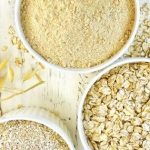Pancreatitis in dogs is a severely underdiagnosed but life-threatening disease in dogs. Which makes treating pancreatitis in dogs difficult but still critical.
Luckily, there are many new methodologies of testing for and treating pancreatitis in dogs currently being studied and developed.
This article will give you a brief rundown of the novel methods of testing and new treatment options for canine pancreatitis that are available now or will be in the near future to help with pancreatic inflammation.

New Methods of Testing for Pancreatitis in Dogs
Computed Tomography Angiography
Computed Tomography Angiography or CTA or CT scan is used in humans to detect pancreatitis and maybe soon be used in many clinics to identify acute pancreatitis in dogs.
A CTA is when your dog is given a CT scan with a contrast dye to show blood vessels and tissues in their body.
Research has shown that CT Scans can identify severe acute pancreatitis in dogs better than traditional ultrasound.
Due to the added cost associated with the CT machine, it is highly unlikely that many clinics will introduce this practice regularly when diagnosing acute pancreatitis in dogs. There are however clinics that offer the service and are available for a referral from your regular veterinarian.
Diagnostic assays
The Precision PSL and the VetScan cPL rapid point-of-care tests (a pancreatic-lipase-specific immunoassay) are two diagnostic assays that have recently, within the past couple of years, been introduced and accepted by many vets.
Many veterinarians are excited about using the VetScan cPL as it is easy to read and pancreatic lipase specific, which means it checks for the enzyme which is usually elevated in cases of pancreatitis. It is also more cost-effective than some other tests on the market and it can be used ongoing to track your dog’s progress.
It should be noted that no test is 100% specific or sensitive and your vet should make a diagnosis of acute pancreatitis based on the test results of the assay in combination with other tests like ultrasound and the common clinical signs seen in dogs with pancreatitis.
New Medication
Panoquell-CA1
In 2022, Panoquell-CA1 was the first drug approved as a novel injectable drug to help manage and improve clinical signs associated with acute pancreatitis in dogs
The injectable drug was conditionally approved for one year since it is the first drug of its kind to be used by veterinarians in the US. The conditional approval pathway means the drug was deemed safe and effective but will be evaluated throughout the next four years for evidence of effectiveness. Once the drug has been proven effective it can obtain full approval.
If the requirements for full effectiveness are not met by year five the product can no longer be marketed.
The active ingredient in Panoquell is Fuzapladib sodium which has been used in Japan since 2018 to help dogs with pancreatitis. The drug gained conditional approval based off of FDA-reviewed data from use in these cases.
Possible side effects of Panoquell for dogs include
- gastrointestinal disorders
- respiratory tract disorders
- liver disease
- loss of appetite
Nutritional management
Many veterinarians no longer abide by the rule of not feeding for 12-24 hours and instead recommend that owners feed their dog’s multiple small meals throughout the day.
Many times dogs have not eaten well or at all for a couple of days and they need nutrition. It is now recommended to slowly introduce a low-fat, bland diet along with any supportive care that your veterinarian may provide.
In some cases, a feeding tube is required if the dog does not want to eat after a couple of days
What are the clinical signs of pancreatitis in dogs
- Abdominal pain
- Lethargy, very tired
- Inappetance, not wanting to eat
- Racing heart rate
- Vomiting
- Diarrhea
- Fever
To read more about pancreatitis in dogs read this article which is a mini-guide to pancreatitis in your dog.
Possible complications of pancreatitis in dogs
- Diabetes mellitus: as the pancreatic enzymes eat away at the surrounding tissues it can damage cells that secrete insulin from the pancreas causing diabetes. This usually occurs in chronic pancreatitis
- Exocrine pancreatic insufficiency
- Digestive tract disorders
To learn about more possible complications of pancreatitis in dogs read our article here.
Can dogs with pancreatitis get better?
Yes, generally dogs with mild pancreatitis can get better and live for a long time even with chronic pancreatitis. My dog was diagnosed with pancreatitis at around 5 years old and lived to be sixteen!
Conclusion
Traditional treatment of pancreatitis in dogs included dietary modification, antibiotics, and anti-inflammatory drugs. While many older therapies are still very effective like not feeding certain foods, particularly fatty foods, intravenous fluids, and other medical therapies, as new research is done on pancreatitis in dogs it is evident that many of the traditional methods are helpful but in some cases a shot in the dark. Further research is needed to determine how to improve these methodologies. If your dog has chronic pancreatitis you may find some relief or benefit in speaking to a specialist.
References
1. Jessica P. Harris et al – Retrospective evaluation of the impact of early enteral nutrition on clinical outcomes in dogs with pancreatitis
2. https://onlinelibrary.wiley.com/doi/full/10.1111/jvim.16292
3. https://onlinelibrary.wiley.com/doi/full/10.1111/jvim.16437
4.https://onlinelibrary.wiley.com/doi/full/10.1111/jvim.15364
5. https://pubmed.ncbi.nlm.nih.gov/23148853/
6. https://pubmed.ncbi.nlm.nih.gov/29424454/
.

























































































































